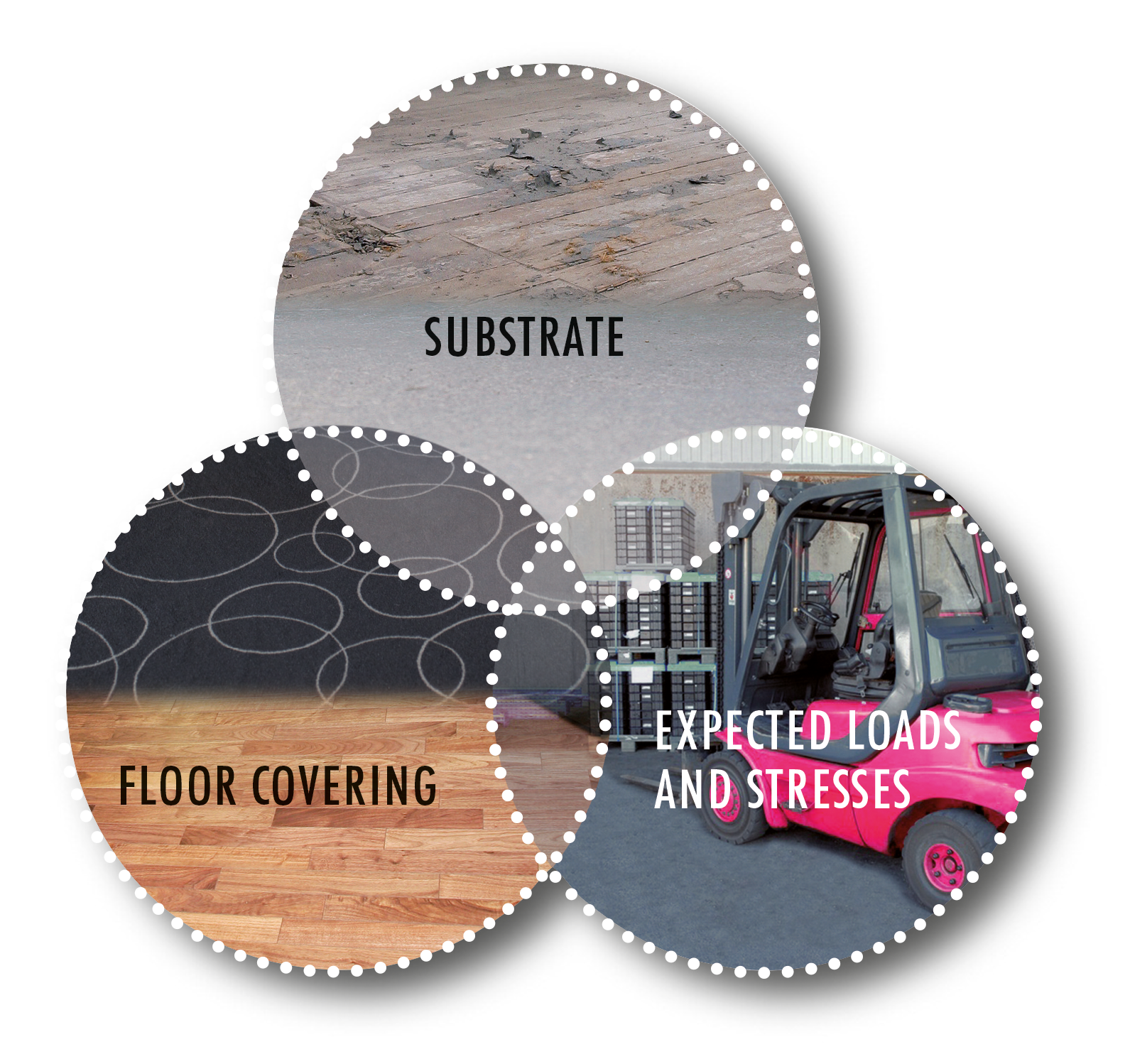Subfloor technology
Proper substrate preparation is key
Expertly prepared subfloors are an essential prerequisite for the flawless and safe installation of any kind of flooring. On the one hand, floor coverings need reliable protection against moisture rising from the substrate. But just as important is a durable adhesive bond between substrate and flooring material.
Thomsit’s Flooring Installation System offers you the right products to ensure expert preparation of the floor according to the applicable standards. It enables you to produce optimum results and generate high customer satisfaction.
The term "substrate" or "subfloor" refers to all floors that are to be covered with new flooring. This not only includes the concrete slab or the existing wearing surface, but also all layers in-between. Floors are among the most important structural elements in a building: They are exposed to the highest stresses and form the basis for all further building activities. Substrates must be able to carry loads while at the same time providing excellent protection from unwanted noise. They also need to be easy to maintain, but at the same time be electrically conductive.
One of the more difficult tasks for a professional floor installer is the identification, assessment and installation of an expertly designed floor structure on an existing subfloor. The so-called "SOS principle", which stands for the three factors Subfloor-Overlay-Stress, is used to illustrate the interaction and interdependence of the three factors.
The Subfloor-Overlay-Stress Factor Principle (SOS Principle)
All three factors, i.e. the substrate, the floor covering and the stresses the entire floor structure must be able to resist, are interdependent and form the key element of tenders, quotations and advisory services. The graph shows that the three elements always overlap in more than one area. For example, no concrete recommendations for flooring installation products can be made if only the existing flooring is known but not the substrate material. On the other hand, it is not sufficient to know the requirements to be met by the floor if no information on the load-distribution layer is available.

Early and comprehensive knowledge of the substrate helps the flooring contractor to submit a qualified, accurate offer, within the scope of his duties of inspection, and thus avoid the risk of consequential damage.
Expertise and experience are required for the contractor to identify and assess the characteristics of the different substrates or subfloors. He then needs to select appropriate, up-to-date products and materials for installing the new floor construction.
Duties of inspection:
DIN 18365 "Flooring Works" and DIN 18356 "Laying of Parquet Flooring and Wood Block Flooring" clearly define the contractor’s duties of inspection and notification.
These standards concern the substrates but cover also certain boundary conditions. They deal, among others, with the issues of uneven areas, substrate cracks, contaminated surfaces as well as missing heating protocols for heated floor constructions.
Thomsit’s technical advisors will be happy to provide personal answers to any question you may have regarding test methods, equipment and other details.
On which subfloor are you going to install which type of floor covering and for which expected use?
2. Repair work
Old subfloors in particular require careful and expert repair before installing the new flooring. The remains of old floor coverings, levelling compounds or adhesives must be completely removed. But also with new screeds it is necessary to close any cracks by force-fit, to fill existing holes and to repair broken out areas (also called spalls).
After careful cleaning and mechanical sanding, an undercoat or primer is applied on the old subfloor or new substrate. These products are of key importance in order to ensure adhesion and optimum flow of the subsequently applied levelling compound. In some cases, it may even be necessary to apply a highly impervious barrier of epoxy resin primer to protect the flooring against residual moisture from the substrate.
With expertly mixed and applied levelling compounds it is possible to produce hard-wearing surfaces ready to receive flooring. Levelling compounds can be applied in layers of different thickness.
The smoother the substrate, the more easily, ergonomically and accurately can the adhesive be applied before finally installing the floor covering.
